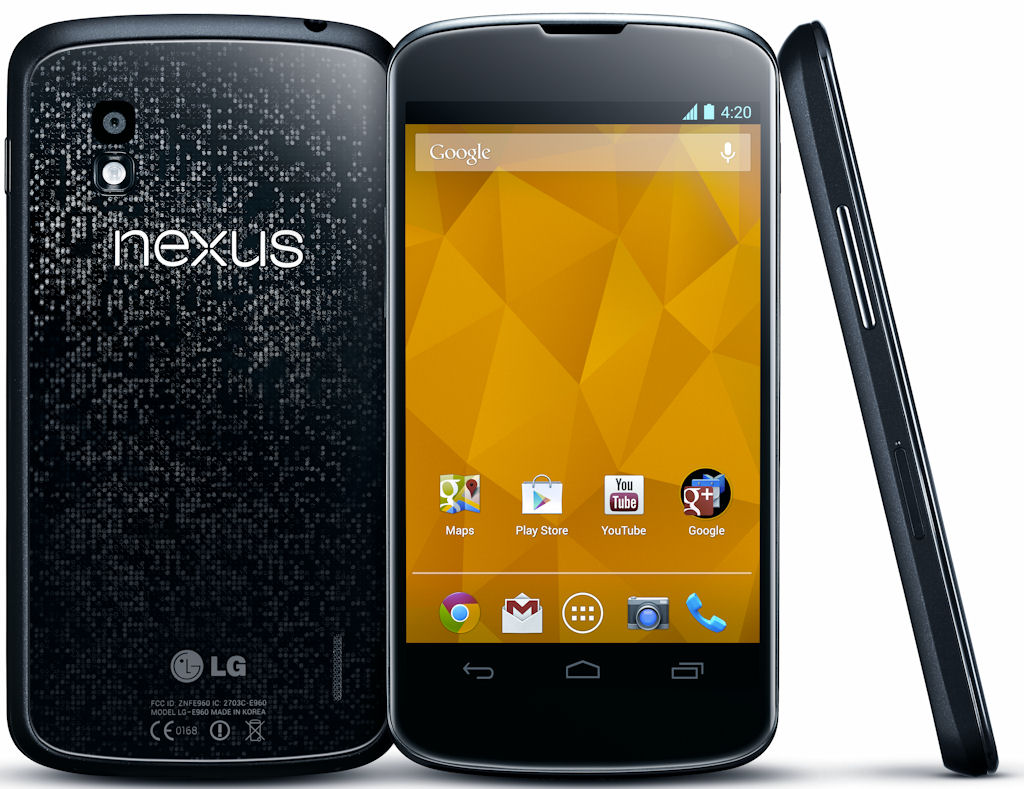Introduction
It's the next-generation Nexus and this time LG has the privilege. And when Google goes "My pleasure!", they most likely mean it. The Nexus 4 aggressively undercuts competitors' pricing as it sets out to wipe the floor with most of them in terms of speed and performance.

At only $300 SIM-free (when most flagships charge $200 on a 2-year contract), the Nexus 4 flaunts a 4.7" WXGA IPS display and the most powerful chipset in an Android phone at the moment. It has of course the latest Android OS and it will be the first in line to get the new ones as they come in.
If you are after an Android smartphone, it's hard to find reasons not to buy a Nexus 4, but some nagging doubts linger after the LG Optimus G review, where not everything turned out all roses and sunshine. Having spent some time with the Nexus, here's what we think are the headline features and what could've been better.
Key features
- Flagship specs at a bargain
- Quad-band GSM/GPRS/EDGE support
- Penta-band 3G with DC-HSPA, up to 42Mbps downlink, HSUPA up to 5.76Mbps uplink
- 4.7" 16M-color WXGA True HD IPS Plus (768 x 1280 pixels) capacitive touchscreen, Gorilla Glass 2
- Stock Android OS v4.2 Jelly Bean, fast updates
- Quad-core 1.5 GHz Krait CPU, 2 GB RAM, Adreno 320 GPU, Qualcomm Snapdragon S4 Pro chipset
- 8 MP autofocus camera with LED flash and geotagging, face detection, Photo Spheres
- 1080p video recording @ 30fps with continuous autofocus and stereo sound
- 1.3 MP front-facing camera, 720p video recording
- Wi-Fi a/b/g/n, Wi-Fi Direct and DLNA
- GPS with A-GPS, GLONASS
- 8/16GB of built-in storage
- microUSB port with TV-out support
- Bluetooth v4.0
- Standard 3.5 mm audio jack
- Voice dialing
- Accelerometer and proximity sensor
- Active noise cancellation with dedicated mic
- 2100mAh battery
- Wireless charging (works with any Qi-compatible wireless charger)
Main disadvantages
- No microSD card slot, no versions with more storage
- Mediocre display sunlight legibility
- Non user-replaceable battery
- Camera is less than stellar, no shutter key either
- No LTE support (not official anyway, and then only one band)
The two biggest complaints since the LG Nexus 4 was announced have been the limited storage and the lack of LTE. But even those things can be overlooked as LTE networks outside the US are just getting started and unless you play a lot of 3D games or have a huge music collection, 16GB should be adequate.
Anyway, the Nexus 4 looks certain to unsettle the competition. If it's available through the Google Play Store in your country, it's practically cheap enough to buy on a whim. With no contracts to worry about, we think there will be plenty of fresh Android converts.
And that's the main goal of the Nexus line - encourage people to use Google's services. Once you're in, you can buy music, TV shows, movies, books, magazines, get cloud storage and documents, even buy stuff in the real world with Google Wallet. The limited inbuilt storage begins to be less of an issue if you use Google Music and Google Drive, you don't need to store all that much locally.
The Nexus 4 is based on the LG Optimus G, so expect there to be a lot of similarities between the two phones but it also shares DNA with the previous Nexus phone. Jump to the next page to see if it has its mom's eyes or its dad's chin.

